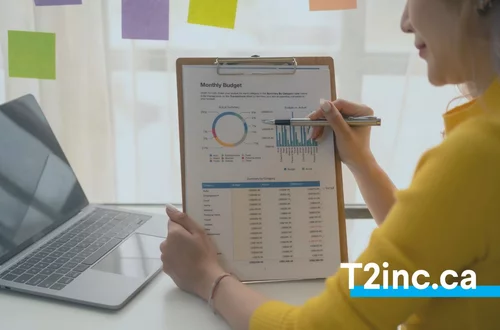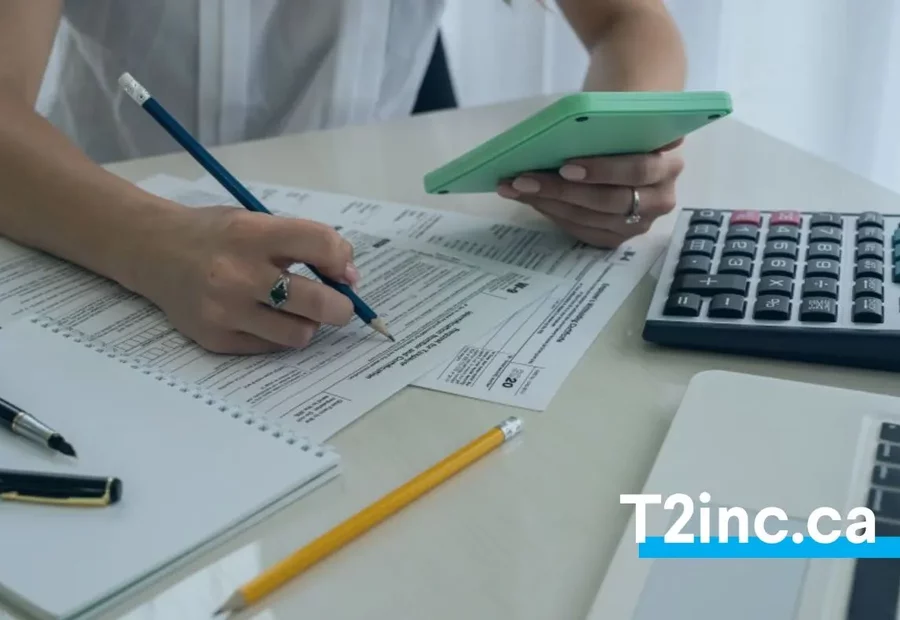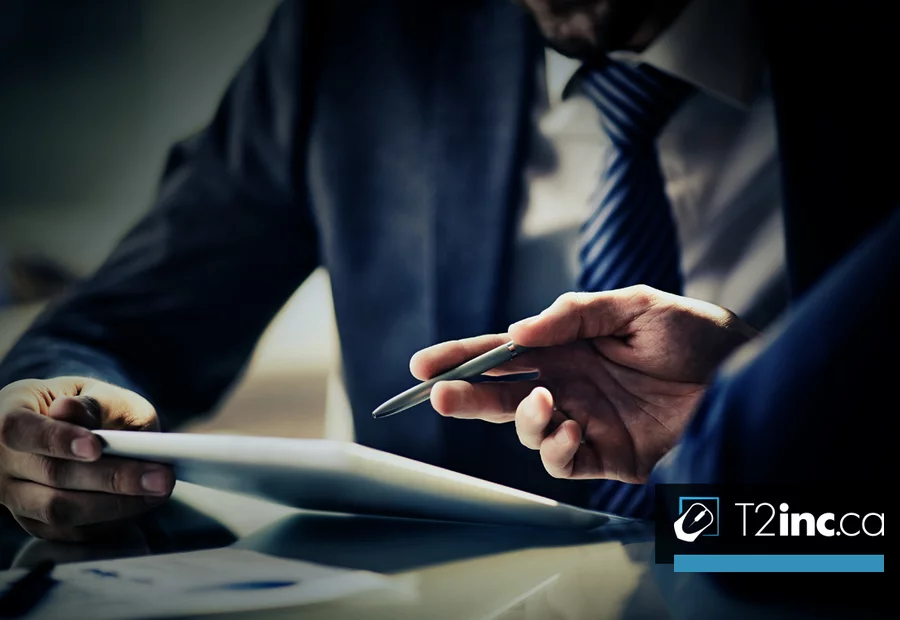What is capital cost allowance (CCA) and how is it calculated?

When a company buys a long-term asset for its business, such as a computer, vehicle, or machine tool, it can't deduct the entire cost all at once on its income tax return. Why not? Because the asset will be used to generate income over several years.
Enter the Capital Cost Allowance (CCA). If you're wondering what CCA is, it's a tax mechanism that allows businesses to spread the capital cost of an asset over several years according to rules set by the Canada Revenue Agency (CRA).
This approach better reflects the actual use of the asset over time. It also helps the company gradually reduce its income taxes while complying with CRA rules.
Capital cost allowance: definition and meaning
In simple terms, Capital Cost Allowance, also written C.C.A, is the way Canadian businesses claim depreciation on qualifying assets. It allows you to deduct a portion of the cost of depreciable property over a number of years.
This tax deduction supports accurate accounting and gradually reduces your taxable income. The amount of CCA you can deduct each year depends on the asset class, the calculation method, and the rules set by the CRA.
How does the Claim CCA work for a business?
In Canada, Capital Cost Allowance is governed by specific tax rules. Each eligible business asset is placed into a CCA classes, based on the nature of the property and how it is used. These classes are defined by the Canada Revenue Agency, and each has its own fixed capital cost allowance rate—also referred to as the rate of depreciation.
This rate is used to calculate the annual CCA claim a taxpayer can include in their corporate income tax return. The method used is generally a declining balance method, meaning the deduction is calculated on the remaining value of the asset, not the original cost.
Also, many assets are subject to the half-year rule, which limits the deductible amount to 50% of the usual rate in the year the asset is acquired.
In some cases, the Accelerated Investment Incentive may apply, temporarily allowing for a larger deduction in the first year. However, it only applies to specific property types acquired and available for use after certain dates.
To take full advantage of these rules, it's important to understand the CCA classes your assets fall into. For example, Class 10 applies to motor vehicles, while Class 8 covers office furniture. Each class follows distinct rules. If you'd like to learn more about the different CCA Classes and how much they cost, check out our complete guide to CCA Classes and their rates.
What types of assets are depreciable?
CCA applies to different types of assets that are used in a business to generate income over several years. These are referred to as depreciable assets or capital expenditures. They are typically grouped into classes based on their nature and function.
Unlike current expenses, the cost of depreciable assets cannot be fully deducted in the year of purchase. Instead, they are gradually written off through CCA.
Here are some common examples of eligible property:
Computers and software
Office furniture (often Class 8)
Specialized tools and equipment
Motor vehicles used, including some zero-emission vehicles, for business purposes
A building or rental property used for business or professional activities
Assets used partially for personal use, such as a car driven for both personal and business purposes, must be prorated. Only the business portion is eligible for a CCA claim.
Certain types of property, like luxury cars or Class 10.1 vehicles, are subject to stricter limits. For instance, if you’re claiming capital cost allowance on a CCA Class 10.1 vehicle, you must follow specific valuation caps.
Some assets used to manufacture and process goods for sale or lease may also qualify for special treatment under CCA rules.
How do you calculate your company's CCA?
CCA is an accounting expense that helps reduce your taxable income year after year. But to take full advantage of it, you need to understand how to calculate it correctly.
Fortunately, CCA is calculated using a structured method. It's based on the acquisition cost of your property, its tax class, and the applicable deduction rate. This calculation is adjusted each year based on the remaining value of the property.
Understanding this logic allows you to better plan your purchases, avoid mistakes in your declarations, and optimize your business finances.
Determine the class to which the asset belongs using CRA forms and publications.
Review the applicable CCA rate for that class.
Calculate the undepreciated capital cost (UCC) of the asset at the beginning of the year.
Apply the half-year rule in the first year of acquisition.
Repeat the calculation each year, adjusting the balance as you go.
Example of CCA calculation
Let's say your company buys a $1,500 computer in 2024. It falls into class 50 with a 55% rate.
Year 1: Half year rule applies → Only half of the cost is eligible: $750
CCA = $750 × 55% = $412.50
Undepreciated capital cost for Year 2: $1,500 − $412.50 = $1,087.50
Year 2: $1,087.50 × 55% = $598.13
And so on, until the asset is fully depreciated or sold.
This annual amount is the CCA you can claim on your tax return.
Tips for maximizing capital cost allowance
When used strategically, CCA is more than just a bookkeeping entry. It's a powerful tax planning tool that can help reduce your taxes and improve your cash flow.
Here are some tips on how to make the most of it:
Buy near the end of the fiscal year: Even if only 50% of the deduction applies in the first year, you'll get an immediate tax benefit.
Don't automatically claim the CCA: If your taxable income is low this year, you can defer the deduction to a more profitable year.
Keep detailed records: Track the purchase date, asset class, usage, and any changes over time. This will help with tax returns and potential audits.
Identify special cases: Some assets, such as income-producing real estate or musical instruments, have special rules. Check before you claim.
To stay compliant and maximize your CCA, it’s often worth consulting a professional, especially if your tax situation is complex or involves specialized assets.
Accounting software or accountant: which is better for CCA?
If you do your own accounting, software like QuickBooks or Sage can calculate CCA automatically. But to get accurate results, you'll need to properly configure your depreciable asset classes and make sure each tax form is filled out correctly.
Even so, some situations require expert guidance:
A change in how the asset is used
The sale of the asset to a related party (non-arm’s length)
A recapture of CCA if the proceeds of disposition exceed the remaining value
A capital gain that affects your taxable income
In these cases, a tax professional can help you avoid costly mistakes and ensure that your deductions are maximized-safely and correctly.
CCA: a tax tool you need to understand
Understanding expensing is one step closer to more strategic tax management. By spreading the cost of depreciable property over time, you can gradually reduce your taxable income and optimize your financial results. Whether your company owns vehicles, machinery, or property used to process goods for sale, CCA helps ensure tax fairness based on actual usage.
But to get the full benefit, you need to properly categorize your assets, apply the right rates, and comply with tax rules.
Our team ensures that your capital cost allowance is correctly calculated and reported on your corporate tax return. Rely on T2inc.ca for a return that's compliant, efficient... and optimized with the information you provide.
Contact our experts
Have a question? Need help? Fill out our online form to get help from our experts.
Contact usNeed more help?
Contact us by filling out our form
Are you interested in our services, but would like more information before taking the plunge? Contact us today and one of our tax accountants will be in touch to help you.
At T2inc.ca, we're committed to helping business owners manage their company's tax affairs so they can grow their business.




